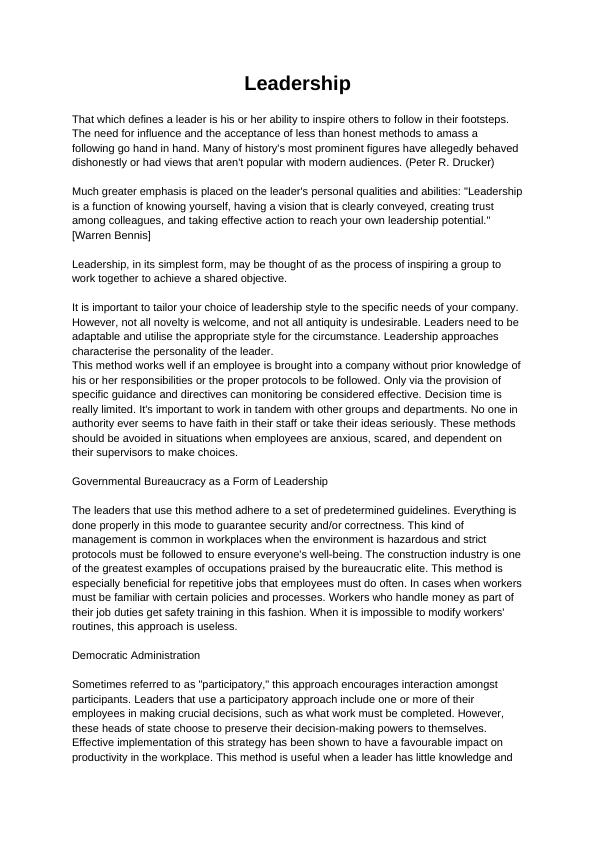Leadership: Inspiring Others to Achieve
Added on 2023-01-24
3 Pages1203 Words23 Views
End of preview
Want to access all the pages? Upload your documents or become a member.
Managing and Leading People: Effective Leadership Approaches
|4
|1604
|483
Performance Development Plan Assignment
|16
|3593
|21
Leadership in Organisation
|11
|3547
|88
Individual Leadership Presentation - Sundar Pichai's Leadership Style and Theories
|15
|1276
|300
Leadership Theories and Models
|8
|597
|383
Leadership in Business: Impact of Character, Ethics, Values and Beliefs
|13
|4460
|369
